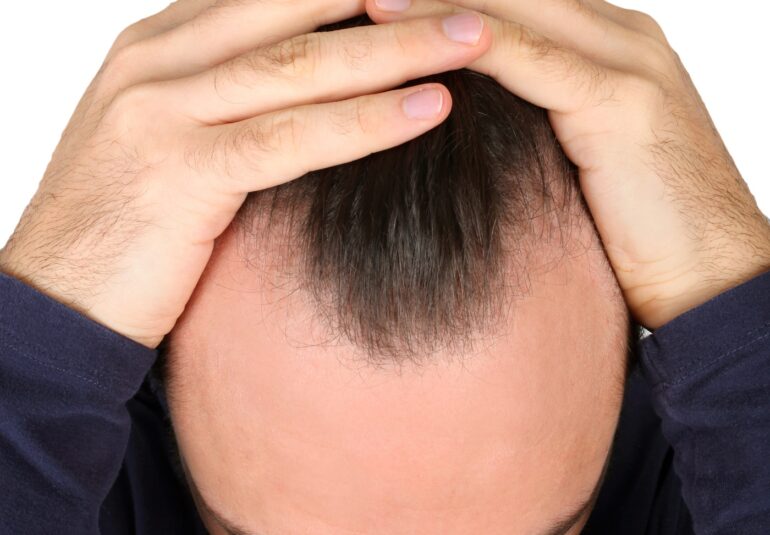
- Hair transplant
-
by Meditravel
Modern methods of hair transplantation
Contemporary aesthetic medicine offers a number of modern methods of hair transplantation for both men and women. Excessive hair loss leading to baldness concerns many people. It is a problem which causes, among others, lowered self-esteem and lack of self-confidence. It is mainly men who suffer from hair loss, but a severely thinning haircut is often visible in women as well. If all methods fail, this does not mean that you have to resign yourself to baldness.
Excessive androgens as a cause of male and female baldness
Many people, especially men, complain about excessive hair loss caused by androgens. Up to 90% of male hair loss cases are due to this reason. Hair loss in men usually follows a typical pattern. It starts at the front of the head and moves further and further towards the occiput, forming hairballs. The Norwood scale, which has been developed to assess the severity of hair loss, perfectly illustrates this process. In the case of women, it’s different because the hair loss starts at the parting and progresses in a completely different way. This type of baldness is shown in the so-called Ludwig chart.
When is it a good idea to opt for a hair transplant?
There are many ways to try to combat baldness, ranging from various rubs, shampoos and lotions to dietary supplements. Certainly, many of these methods can be helpful and effective, but if the hair problem is recurring and baldness is increasing, it’s worth trying to get to the root cause of the bad hair condition. When you are dealing with advanced hair loss and it seems impossible to regain a lush and thick head of hair, it is worth considering hair transplantation.
Micro FUE – a modern method of hair transplantation
Micro FUE is one of the methods of hair transplantation. It consists in taking more grafts, i.e. hair follicles together with their bulbs and sebaceous gland, from the patient’s donor area. During the procedure, the doctor uses a punch head to extract more grafts per square centimetre and less skin. A great advantage of this method is also a shorter healing time and less violation of the patient’s donor area.
Before treatment
Before the procedure, it is required to completely shave the area where the grafts are taken, so it is better to shorten the hair beforehand doing it gradually to get used to the hairstyle. The so-called donor area, the place from which hair follicles will be taken, is usually the occiput. It is in this area that the hair is least likely to suffer from androgenic alopecia, thus retaining its density and better condition. If necessary, follicles can be taken from another area on the body such as the chin or chest.
Collection of grafts for hair transplantation surgery
Transplants are harvested using a special blade with a very small diameter, minimising subsequent scarring. During one procedure even more than four and a half thousand grafts are taken. The extracted hair follicles are placed in previously prepared channels running to the established frontal line of the patient’s hair. This is a very important stage, because the proper implantation of follicles determines the later, natural appearance of the hairstyle. For this to happen, the canals must be placed as close as possible to each other, but not in contact. Joining several canals together could result in unsightly scars and disrupt the final effect of the treatment.
Sapphire FUE – hair transplantation using the FUE method with a sapphire blade
Sapphire fue is compatible with the standard FUE procedure. The difference lies mainly in the material used to make the blade, which has a significant impact on the results of the procedure. As the name suggests, the blade is made of sapphire, a precious gemstone, instead of steel as is the case with conventional blades. The sapphire tip is used to create incisions on the scalp in order to implant hair follicles. Steel blades have a “U” shaped tip, while sapphire blades have a “V” shaped tip. It is the sharp edge of the sapphire that provides much more precise incisions, thus eliminating the risk of tearing the structure of the adjacent hair follicle canal. Advantages of using a sapphire blade tip:
- Virtually invisible scars.
- Minimal pain after the procedure.
- A natural-looking hairline.
- Less risk of complications.
Sapphire FUE recommended for
Hair transplantation with this method is especially recommended for men and women who are just beginning to experience the problem of thinning hair and first symptoms of baldness. The treatment makes it possible to increase the density of hair and to restore the attractive appearance of the hairstyle.
The patient’s qualification for this transplantation method takes place after consultation with the doctor. The choice of the FUE method is influenced by several factors such as the cause of baldness, the density of hair in the donor area and the stage of baldness. The effects after the procedure are visible between the fourth and sixth month. The final result can be observed one year after the hair transplantation.
DHI method – Direct Hair Implantation
It is a method of hair transplantation based on direct implementation of hair follicles. It is one of the most advanced techniques of this type.
During the procedure, hair follicles are taken from the patient’s donor zone to the recipient zone using the same device. Thanks to the combination of these two stages, it is possible to obtain a higher density of hair in the areas affected by baldness. The risk of damaging existing hair follicles is very low. This method allows you to control the depth and direction of placement of individual hair follicles in the scalp.
Collection of grafts for hair transplantation using the DHI method
Hair harvesting from the donor area is identical to the FUE method, but their implantation in the recipient area is slightly different. For this purpose so called choi pens are used, thanks to which creation of the place and implantation proceed simultaneously. A special implant enables the hair to be placed at different angles. This gives the doctor control and the opportunity to adjust the hair to the existing ones. The result is a natural shaping and thick hair of the patient.
It is not necessary to shave the head completely in order to perform hair transplantation with the DHI technique. Before the procedure, local anaesthesia is performed. One of the advantages of this method is the guarantee of complete absence of scars, as the doctor does not make holes or incisions. Therefore, the patient does not need a long period of convalescence after the procedure. DHI is especially recommended for facial hair transplantation, i.e. chin or eyebrows.



